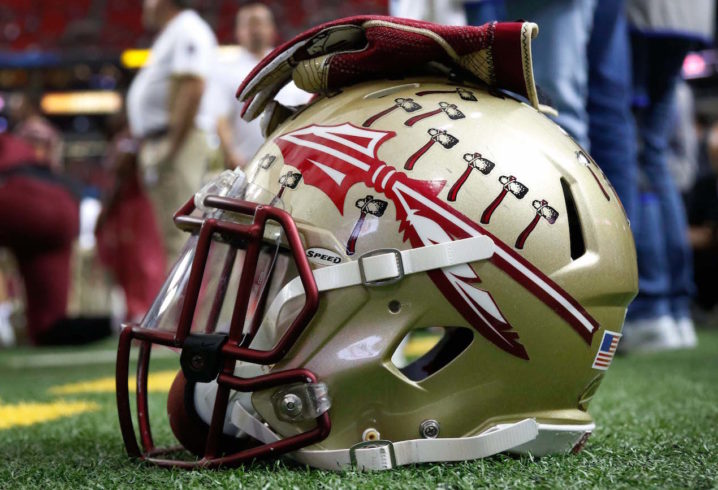
Another college football season is upon us, bringing with it both unmitigated excitement and a spate of articles decrying the academic malfeasance of several of the N.C.A.A.’s best teams. These exposes, as predictable as the outcomes of most early season games, include accounts of plagiarism, missed classes, grade inflation and changed grades. Criticism focuses on the exploitation of athletes who often never graduate or who know too little when they do; or on the million dollar plus salaries of the coaches who care more about their own incomes than their programs’ educational outcomes; or the academic dishonesty of the faculty who participate in various grading schemes or who pretend they’re ignorant of them.
Remedies designed to end what has been described as a “scandal” and an “epidemic” tend toward regulation. For example, in 2016, the NCAA’s Division 1 Council promulgated a requirement that colleges adhere to the same academic integrity policies that govern the school’s entire student body.
Confidence in the effectiveness of this kind of regulation is based on the assumption that institutions of higher education pretty much succeed in fulfilling their fundamental mission of educating students. Therefore, the solution to an athletic program’s academic problems is to align its standards with those of the institution at large. Rampant plagiarism? Respond as the school does. Unbridled grade inflation? Respond as the school does. Unacceptably low graduation rates? Respond as the school does. Low expectations? Respond as the school does. Simply subject student-athletes to the same expectations and sanctions that govern the general student population, and failures surrounding academic integrity will be resolved.
But what if that alignment already exists? What if the basic problem isn’t with athletic programs, but with the institutions that house them? What if the similarities between the academic experiences of a high percentage of both athletes and non-athletes outweigh their differences? What if colleges in general are rife with plagiarism, grade inflation, meager expectations, and low graduation rates? What if the “epidemic” pervades much of academia and the “scandal” is institutional?
My concern, based partially upon nearly forty years of teaching at three different colleges, is captured in this description of one student, whom I’ll call ‘Alana.’ A young woman who graduated last spring from a reputable community college, Alana is from a low-income neighborhood and is the first in her family to receive a post-secondary degree. With a 3.5 grade point average, she graduated with honors, which made her mother proud. In two years she will likely graduate from a nearby four-year institution.
Although she has not been diagnosed with a learning disability, and three of her many “A’s” are in required English courses, this personable young woman cannot write a coherent sentence, cannot spell commonly used one syllable words, is unable to comprehend text written at the fifth grade level, and plagiarizes regularly. When she submits a paper that juxtaposes elementary school scribblings with passages from a peer-reviewed journal, she cannot distinguish the two. Recent studies of embattled New York City public school students and their academically adrift college counterparts remind us that Alana is not the only new student or recent graduate to find herself matriculated or degreed but uneducated. Far from it. And given the popular “party pathway” that characterizes so many universities today, neither lower-income students nor athletes are alone in being harmed by educational malpractice, though their injuries may be more severe and permanent. Research also shows that Alana is in the college student mainstream in both plagiarizing and benefiting from unearned grades.
A question that should be asked is, how is Alana’s situation different than that of a student-athlete who leaves college after four years without the knowledge or skills needed to earn a living? Both have been used as revenue sources by a corrupt system that financially benefits many stakeholders, including faculty, administrators, and coaches; both sets of beneficiaries are at least somewhat aware of, and thus complicit in, that fraudulent system; both arrangements are to some extent funded by taxpayers (even at private schools); both burden society with a surplus of uneducated and often unemployable adults.
Through the creation and perpetuation of millions of jobs, the system is served, but what about Alana and her classmates, a small percentage of whom are athletes? They will likely hold a job they could have landed with only a high school degree, have inadequate health care options, struggle to feed their families, and lack access to the resources necessary to sustain the stable relationships that are important to the health and well-being of their children.
Ensuring that student athletes are subject to this dysfunctional system will not help them in any substantial way. In the end, after surveying the results of enforcing institution-wide academic expectations, we’ll be left wondering what motivated us to single out this tiny subset of athletes from our college student population for scrutiny and condemnation; we’ll ask how we missed the forest for the trees.
By John Hearn
John Hearn’s teaching career spanned nearly 40 years and three institutions of higher education. He can be reached at johnhearn026@gmail.com.